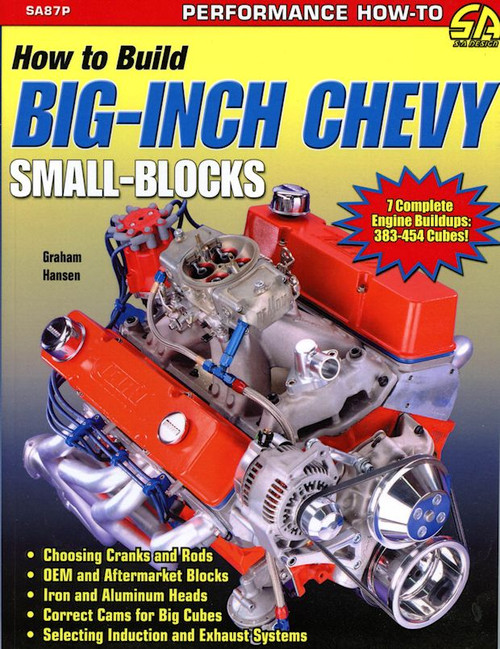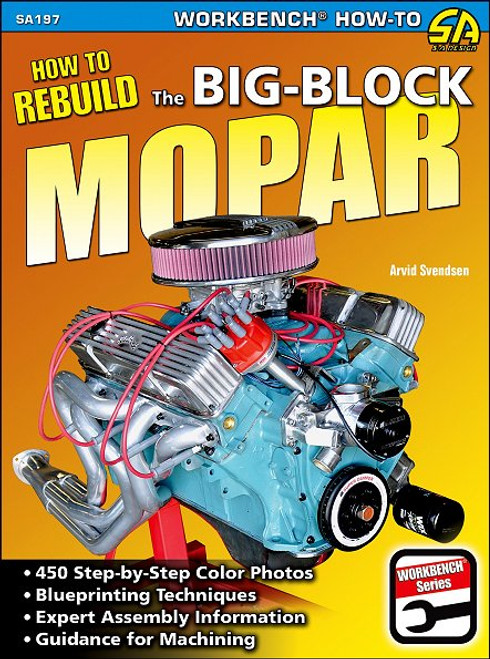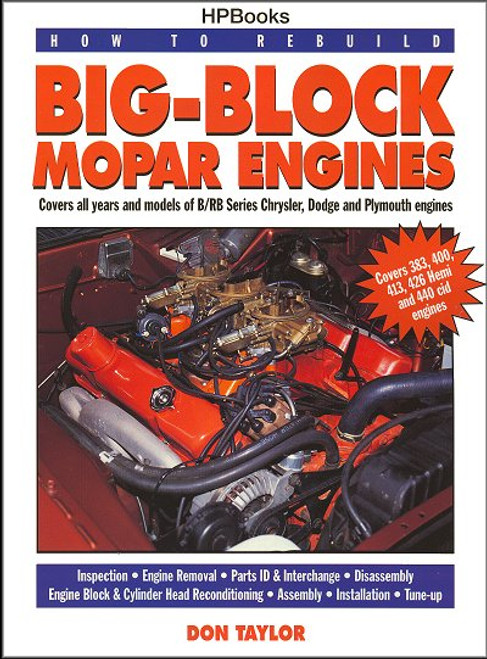There was a time when big horsepower for Mopar muscle cars or trucks, were limited to swapping your engine with a big-block or a Hemi. The necessary parts to make the swap possible were an added headache, not to mention the fact that Hemi motors have always had high price tags attached to them. Fortunately, there's another way to get all those extra Mopar horses you want: bore and stroke your Mopar small-block to get up to 476 cubic inches! Mopar small-blocks lend themselves to increasing displacement without extensive mods or specialized machine work. The engine seems to have been designed to gain more cubic inches, and in How To Build Big-Inch Mopar Small-Blocks, author and Dodge Motorsports and Mopar Performance Parts specialist Jim Szilagyi, explains how!
Book Excerpt: How to Build Big-Inch Mopar Small-Blocks CONNECTING RODS
CYLINDER HEADS
Subject: How to build Dodge, Mopar big-inch small-block engines. ISBN-10: 193249457X | ISBN-13: 9781932494570 | CarTech SA104P
Book Excerpt: How to Build Big-Inch Mopar Small-Blocks CONNECTING RODS
Connecting rods are an area on the stroker engine worth spending a great deal of time planning to select the correct parts. Proper rod selection can make the engine more durable and much easier to build. Errors in this area create headaches from a clearance standpoint and increase the time and cost to prep the block.
ROD LENGTH When building a stroker engine, most engine builders recommend the use of a longer connecting rod to improve the rod angle when using a long-stroke crankshaft. On most Ford and GM small-block engines, the stock connecting rods are short, at about 5.400" to 5.700" long. All Mopar small blocks come from the factory with 6.123" connecting rods. This is a big advantage since the extra rod length also provides more clearance for large counterweights on a stroker crank. Most mild Mopar stroker engines can use the stock rods, avoiding the cost of aftermarket rods.
CYLINDER HEADS
Cylinder heads are one the keys to great performance on any stroker engine. The large-displacement stroker engine demands very good cylinder head airflow to make big power. But great-flowing heads only work when they are used with the other components designed to work together (i.e., camshaft, intake manifold, and headers).
IRON VS. ALUMINUM The choice between cast-iron and aluminum heads is based on cost and weight. High-performance iron and aluminum heads are readily available and they both offer great performance in stroker engines. Aluminum heads reduce the weight of the engine by about 50 lbs. Most aluminum heads are more expensive than iron heads. Aluminum heads are also easier to fix if they ever become cracked and need to be welded. Cast-iron heads don't transfer as much heat from combustion to the coolant, making them slightly more efficient. This is the reason why engines with aluminum heads generally use a slightly higher compression ratio than a similar engine with iron heads. For example, an engine with iron heads should use a 9:1 compression ratio on pump gas, where the same engine can run 10:1 compression with aluminum heads. Combustion and heat are the way fuel is transferred into mechanical power.
Subject: How to build Dodge, Mopar big-inch small-block engines. ISBN-10: 193249457X | ISBN-13: 9781932494570 | CarTech SA104P
TABLE of CONTENTS:
- INTRODUCTION: Hot rod and street rod engines | Production small-block engines | Why LA and Magnum engines are shown in the same book | Mopar performance parts
- MADE TO BE STROKED: Advantages | Potential problem areas | Stroker kits
- CYLINDER BLOCKS: LA engine blocks (1964-1992) | 360 Magnum engine block (1993-2003) | 340 replacement engine block | R3 engine block | Aluminum A engine block | Block preparation | Block selection
- CRANKSHAFT: Crankshaft basics | Types of cranks | Stroke | Bearings | Internal and external balance
- OILING SYSTEM: Problems with the stock oiling system | Recommended modifications | Optional modifications | Conclusion
- CONNECTING RODS: Rod length | Rod ratio | Stock LA rods | Stock Magnum rods | Fasteners | Block clearance | Pre-assembly | Conclusion
- PISTONS and RINGS: Material and processes | Forged | Dished, flat top, or dome? | Valve clearance | Compression height | Weight | Rings | Conclusion
- CAMSHAFTS: Production cams | Cam bearings | Cam drive | Timing chain tensioner | HP thrust plate | Fuel pump eccentric | Problems with flat tappet camshafts | Stroker cams | Roller tappets on R3 blocks | Used R3 blocks | Conclusion
- CYLINDER HEADS: Iron vs. aluminum | Valve angle | Valve spacing | Ports & chambers | Flow | Cylinder head selection | CNC porting | Conclusion
- VALVETRAINS: 48-degree valvetrain | Valvetrain oiling | Tappets | Pushrods | Rocker arms — LA heads | Rocker arms — Magnum heads | Valvesprings | Retainers | Valves | Valve to guide clearance | Conclusion
- INDUCTION SYSTEMS: Manifold types | LA 340/360 heads | W2 heads | W8, W9 heads | Magnum heads | Fuel pump | Magnum fuel injection (MPI) intakes | Magnum intake — oil leaks | Distributor clearance | Cross-over pocket | Conclusion
- EXHAUST SYSTEMS: Header basics | Types of headers | LA heads | Magnum heads | W2 heads | W9 heads | Exhaust system
- COOLING SYSTEMS: Cooling theory | Improved cooling | Cross drilling block | Cylinder head modification | Radiator | Electric cooling fan | Oil cooler | Water pump | Radiator cap | Airflow through the radiator | Airflow through the radiator | Overflow bottle | Coolants | Conclusion
- BUILDING and BLUEPRINTING: Block preparation/engine mockup | Disassembly and cleaning | Final assembly | Additional information
- ENGINE PACKAGES:
- APPENDIX A: Stroker kits | APPENDIX B: Source guide | Source by type of product
- ENGINE BUILD SHEET










